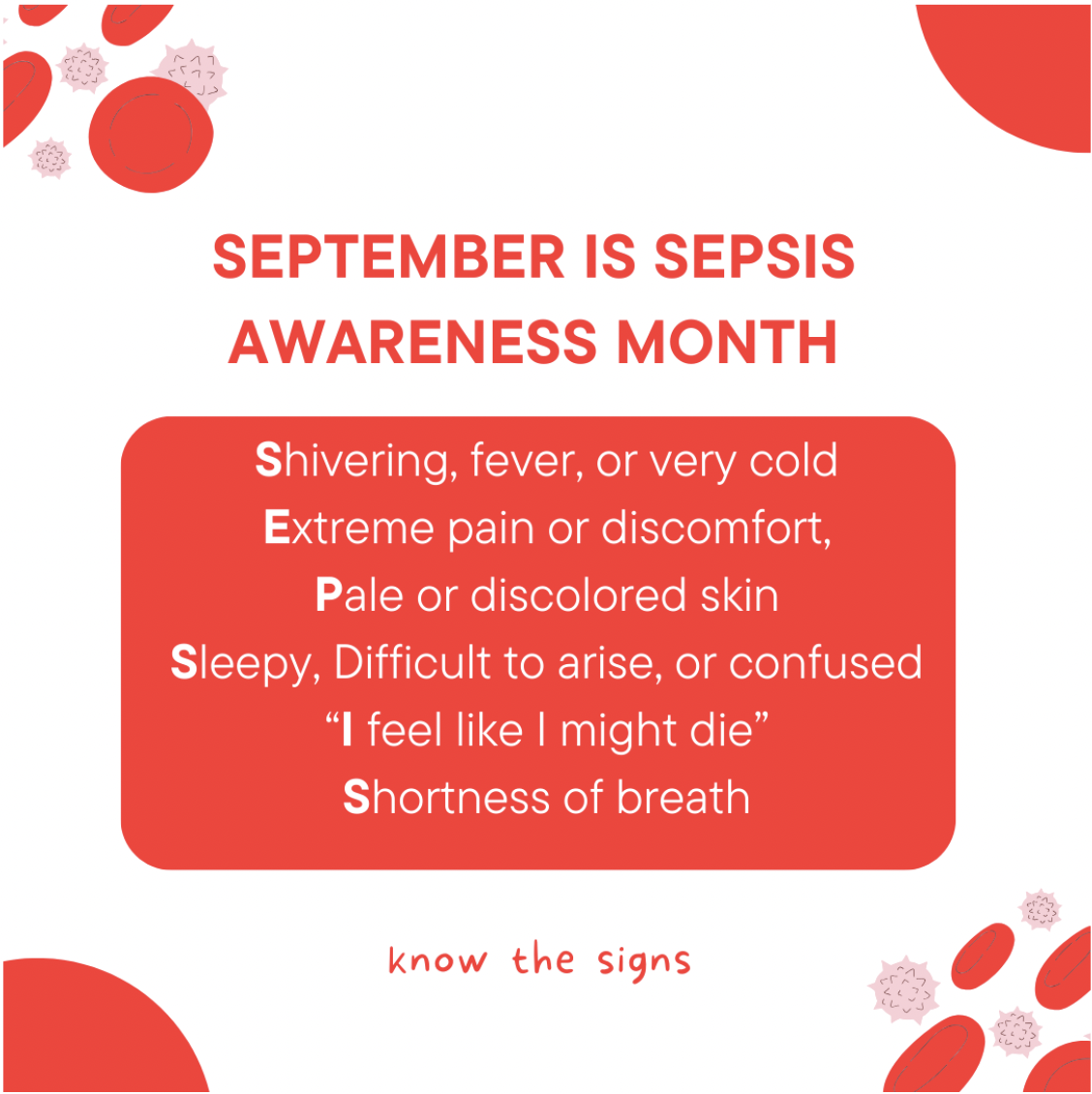September is Sepsis Awareness Month, observed to bring awareness to the signs of sepsis in the hope to save lives. Sepsis is a severe response to infection where the infection-fighting process turns on the body, causing potentially severe damage to the patient’s organs. Sepsis can progress into septic shock, a severe drop in blood pressure that can cause further damage to the internal organs and potentially lead to death.
Who can get Sepsis?
Anyone can get sepsis at any point in their life, but the following groups are at higher risk:
- Adults 65 and older
- Individuals with weakened immune systems
- Individuals with chronic health conditions
- Individuals with a history of sepsis or a recent severe illness/hospitalization
- Infants under the age of 1
Identifying Sepsis
The earlier sepsis is diagnosed, the better the potential health outcome will be.
SEPSIS is an acronym used to identify and remember key symptoms.
- Shivering, fever, or very cold
- Extreme pain or discomfort, often described as “the worst ever”
- Pale or discolored skin
- Sleepy, difficult to arise, or confused
- “I feel like I might die”
- Shortness of breath
If the disease progresses into septic shock, more severe symptoms may occur including:
- Inability to stand
- Severe exhaustion or inability to stay awake
- Major changes in mental status (i.e. extreme confusion)
Sepsis is a medical emergency. If you experience symptoms of sepsis, seek emergency medical care immediately.
Resources
If you or someone you know is struggling with sepsis recovery, information and resources are available through the Sepsis Alliance.
References
Centers for Disease Control and Prevention. (2023, August 24). What is sepsis?. Centers for
Disease Control and Prevention. https://www.cdc.gov/sepsis/what-is-sepsis.html
Mayo Foundation for Medical Education and Research. (n.d.). Sepsis. Mayo Clinic.
https://www.mayoclinic.org/diseases-conditions/sepsis/symptoms-causes/syc-20351214







